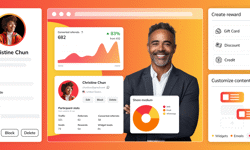
Q: Can you begin by introducing us to outcomes data?
A: I think starting with a bit of context usually helps. When a brand produces a digital advertising campaign, they normally look at two key types of metric to appraise its effect. The first type is the data produced when a campaign is initially delivered, showing how successfully the ads have reached an audience — attention metrics, impressions, viewability and the like. The second type is the data that indicates how successful the campaign was in driving results — click through rates or actual sales numbers, for example.
These two types of data will tell you a lot about how a digital ad campaign performs, but not everything. We believe that between these two stages — delivery and performance — there’s a wealth of extra data that can offer a truly holistic, elevated and nuanced picture of ad effectiveness. That data is outcomes data. It shows the effect a campaign is having on brand perceptions, and takes the form of metrics such as brand awareness, consideration, preference and purchase intent.
Outcomes data is very important for a brand seeking to monitor and analyse how it is perceived by consumers, and provides a wealth of context to a campaign’s overall performance. The simple fact is that knowing how an audience perceives a brand is a key element in understanding overall campaign performance, and having that information also helps you plan how to move the customer more effectively through the funnel in future campaigns.
Q: How do you go about collecting outcomes data?
A: There are quite a few ways of collecting outcomes data. The one we find most effective is to survey consumers after they have seen a campaign. This allows us to use their survey responses and combine them with other data regarding their exposure to the campaign, thereby working out how much an ad has affected their perceptions of the brand.
In practical terms, publishers run a quick survey — usually one question — to visitors who have previously seen the campaign, which helps us understand how engaged the audience is with the advertised brand. As a result, the buy side is provided with a more accurate picture of how their campaign is affecting their brand, and gives them insight that can then be fed back into future campaign development.
Q: How can publishers use the data to optimise advertising performance?
A: This is where outcomes data gets really interesting. It adds so much to a publisher or advertiser’s understanding of a campaign. These insights can be used to drive everything from making minor creative tweaks, to initiating larger directional changes — a decision to explore different targets or formats, for example. Outcomes data facilitates a rolling process of review that powers optimisation while feeding an ongoing campaign learning process that allows changes based on insights gathered about ad effectiveness.
One other way publishers can use the data is to help advertisers build long-term relationships with their consumers. This approach shuns short-term, smash-and-grab outcomes such as immediate sales or subscription sign-ups, but instead aims to build a meaningful relationship with an audience that develops over time as campaigns continue to strengthen perceptions of the brand.
Q: How can publishers use outcomes data to inform future sales strategies?
A: Outcomes data is also great for helping publishers with future sales strategies. The data is so granular that it gives them holistic insight into what works and what doesn’t in any particular campaign — which is key for producing successful future ad campaigns.
Imagine you’re a shoe manufacturer launching a new line of trainers. It makes total sense to advertise through a publisher that has metrics that demonstrate it is good at driving brand awareness. If the publisher can use outcomes data to demonstrate that it can also effectively drive brand consideration or purchase intent, then that is going to appeal even more to that brand.
Publishers that embrace outcomes data as a central part of their strategy position themselves well because they will help drive long term results for their advertisers. And at the same time, they will build themselves a reputation for pursuing effectiveness through their consistent approach to measurement.
Q: Does chasing outcomes data actually work for publishers?
A: Frankly, yes it does. Lots of publishers we work with are beginning to employ outcomes data more regularly to shape their strategic direction and commercial offering. News UK is a great example. It has combined measurement data such as consideration, purchase intent and brand awareness with its own first-party data to power a data-led campaign planning tool.
By embedding outcomes data in their regular processes, News UK and various other publishers can now offer brands an enhanced ability to understand how their campaigns are working and then optimise these learnings towards building more successful future campaigns.

About us
Brand Metrics’ award-winning SaaS technology allows publishers to measure brand lift at true scale. We do not use research panels, but measure campaigns “in the wild” on publisher sites, allowing for a more accurate result. Measurements are quick to set up, are cost effective and allow campaigns as small as 50k impressions to be measured across display, branded content, video and CTV. Every measurement captures four metrics: awareness, consideration, brand preference and action intent, and compares these scores against Brand Metrics’ 35k+ global benchmarks. Over 60 leading global publishers use Brand Metrics’ technology including New York Times, The Guardian, Financial Times, Newscorp, National World, Future Publishing, Bloomberg and Washington Post. More info at www.brandmetrics.com










